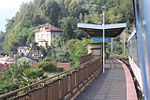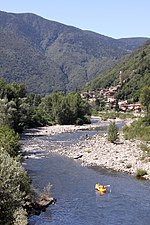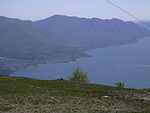Maccagno con Pino e Veddasca
Maccagno con Pino e Veddasca (Ticinese: Macagn cont Pin e Vedasca) is a comune in the province of Varese, in Lombardy, Italy, that was formed on 25 May 2014 from fusion of the communes of Maccagno, Pino sulla Sponda del Lago Maggiore and Veddasca. A referendum to create this comune was held on 1 December 2013. The referendum was passed with 77% yes and 33% no votes. Maccagno con Pino e Veddasca borders the following municipalities: Brissago (Switzerland), Cannobio (VB), Curiglia con Monteviasco, Dumenza, Gambarogno (Switzerland), Luino, Ronco sopra Ascona (Switzerland), Tronzano Lago Maggiore. Its neighborhood of Maccagno Imperiale is one of I Borghi più belli d'Italia ("The most beautiful villages of Italy").
Excerpt from the Wikipedia article Maccagno con Pino e Veddasca (License: CC BY-SA 3.0, Authors).Maccagno con Pino e Veddasca
Maccagno con Pino e Veddasca
Geographical coordinates (GPS) Address Nearby Places Show on map
Geographical coordinates (GPS)
| Latitude | Longitude |
|---|---|
| N 46.05 ° | E 8.7333333333333 ° |
Address
21061 Maccagno con Pino e Veddasca
Lombardy, Italy
Open on Google Maps










